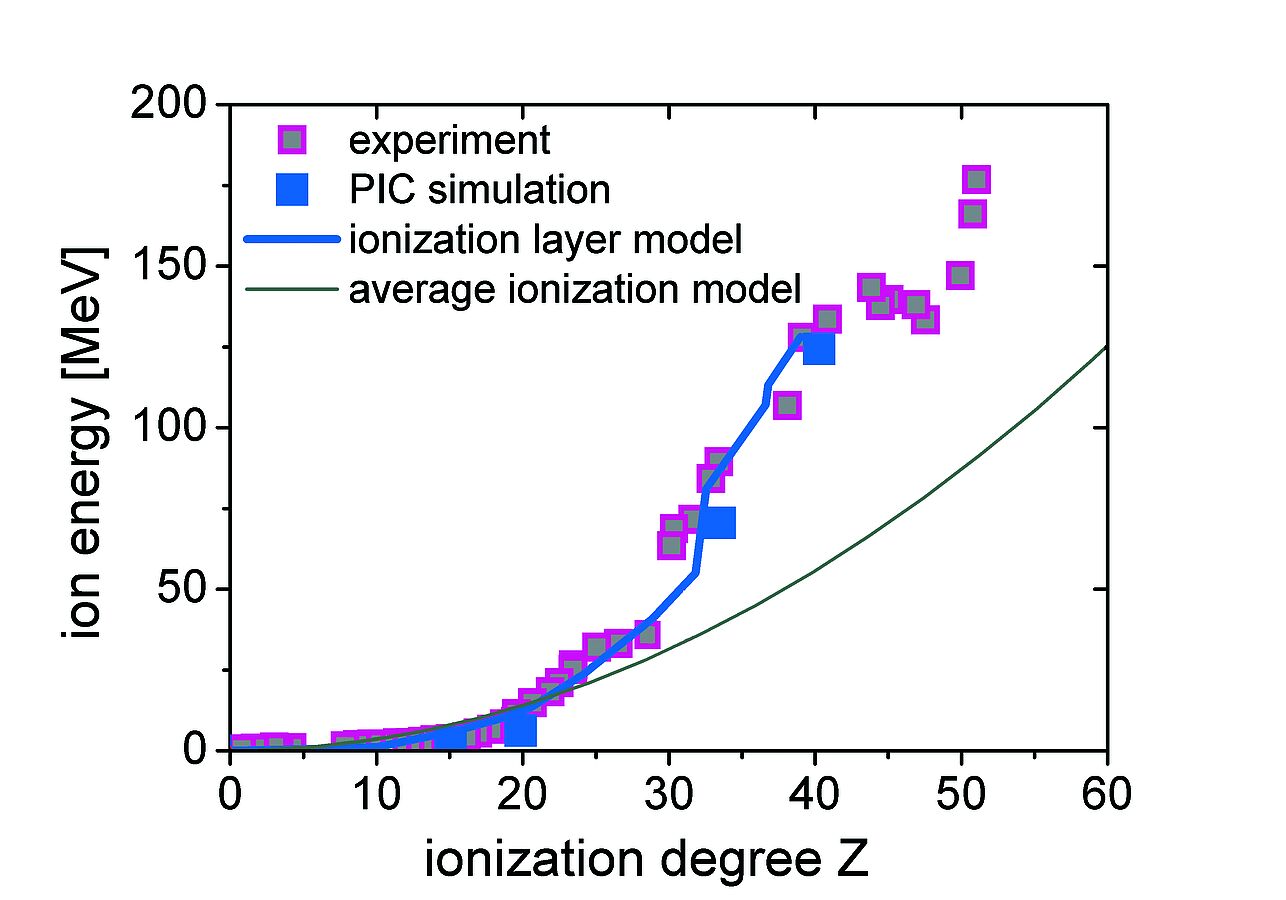A new laser plasma acceleration scheme for heavy ions is found, leading to a significant boost of their kinetic energy by Coulomb explosion.
We are all made from stardust - this phrase contains a lot of unknown but exciting physics, which the poem writer probably did not want to tell. Within this context the top ten ranking of open problems in physics lists the question related to the synthesis of the heavy elements - stardust. To gain a deeper inside, from an experimental point of view, heavy ions with very high velocities are needed. The collision of heavy particles at high kinetic energy enables the study of the resulting reaction products. Beyond basic research, beams or pulsed beams of heavy ions are in the focus of applications in solid state physics as well as in bio-medical areas.
Such beams are produced with particle accelerators which belong to the biggest and most complex machines for research today. In order to make things more compact there is a strong motivation for searching new concepts and technologies in particle acceleration. One approach is acceleration by plasma created by laser pulses at relativistic intensities. The term relativistic indicates here that the intense light field causes an electron motion close to the speed of light and hence relativistic effects determine the properties of the laser-plasma interaction. Enormous fields with a strength of the order of megavolts per micrometer can be created in a well-defined direction leading to fast (some ten percent of light velocity) light and heavy ions. Due to the extreme acceleration these ion beams have some striking characteristics which are studied and applied in experiments.
The challenge of heavy ion acceleration results directly from basic principles: Ions are accelerated proportional to their charge to mass ratio Z/A leading to higher velocity for lighter elements. Laser plasma acceleration of really heavy ions e.g. gold, had been quite inefficient for this reason as very high ionization degrees are difficult to obtain. This limitation is overcome in our experiments with freestanding gold foils of nanometer thickness: which provide an so far unexpected high degree of ionization and specific distribution of the heavy material (Z>40+ for Gold ions). Compared to former experiments we achieved kinetic energies of the gold ions with 1 MeV per nucleon with an order of magnitude less laser energy.
Common laser plasma driven acceleration models assume an averaged degree of ionization, which follows with a fixed, spatially uniform electron density. From our theoretical considerations and simulations we recognized, that the obtained high kinetic energies of the heavy ions are not consistent with an average ionization. Instead, we found for the ultra-thin targets a spatially varying degree of the ionization, with the highest degree of ionization at the target boundaries (found by simulation - cf. Fig.) - where it greatly enhances the electrical field and thus the force driving the ion acceleration.
Extrapolation of our results envisions the study of nuclear processes if heavy ions with adequate kinetic energies will be produced by using femtosecond lasers with 100 Joule pulse energy.
Original publication: Physical Review Letters
Full citation:
J. Braenzel, A.A. Andreev, K. Platonov, M. Klingsporn, L. Ehrentraut, W. Sandner, M. Schnuerer, "Coulomb-Driven Energy Boost of Heavy Ions for Laser-Plasma Acceleration", Physical Review Letters 114, 124801 (2015)
doi: http://journals.aps.org/prl/abstract/10.1103/PhysRevLett.114.124801
Fig. 1:
Laser (1.3J @ 35 fs) irradiated 14 nm thick gold foils. The
picture shows dependence of maximal ion energy on its ionization energy -
as the experiment delivered (pink squares). We found good agreement
with the 2D -PIC simulation - blue squares and with the prediction of
our new theoretical model -blue line in contrast to the established, old
model - black line
Contact
| Julia Braenzel Dr. Matthias Schnuerer |


